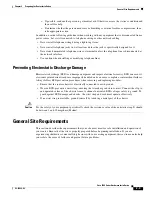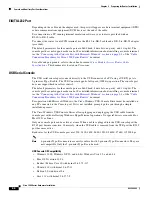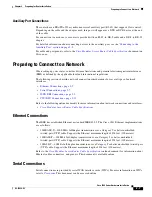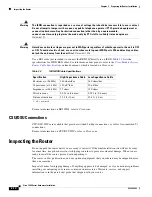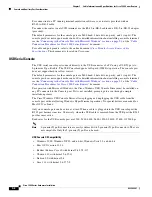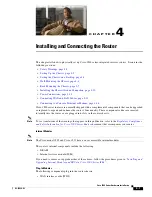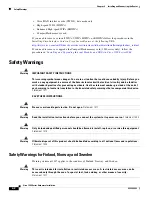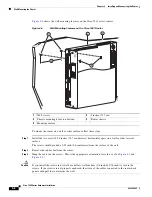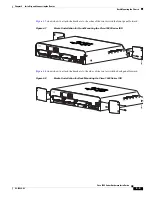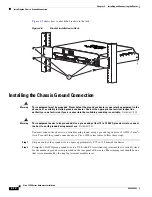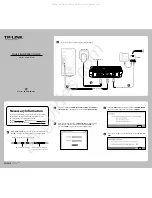
C H A P T E R
3-1
Cisco 1900 Series Hardware Installation
OL-19084-01
3
Cable Information and Specifications for Cisco
1900 Series Routers
This document gives cable information and specifications for the console port, auxiliary port, and
network ports on your Cisco 1900 series integrated services router. It contains the following sections:
•
Console and Auxiliary Port Considerations, page 3-1
•
Preparing to Connect to a Network, page 3-3
For cable connection procedures, see the
“Cable Connection Procedures for Cisco 1900 Series Routers”
document.
Console and Auxiliary Port Considerations
The router includes USB, asynchronous serial and auxiliary ports. The console and auxiliary ports
provide access to the router either locally using a console terminal connected to the console port, or
remotely, using a modem connected to the auxiliary port. This section provides important cabling
information to consider before connecting the router to a console terminal or modem.
The main difference between the console and auxiliary ports is that the auxiliary port supports flow
control, whereas the console port does not. Flow control paces the transmission of data between a
sending device and a receiving device. Flow control ensures that the receiving device can absorb the data
sent to it before the sending device sends more. When the buffers on the receiving device are full, a
message is sent to the sending device to suspend transmission until the data in the buffers has been
processed. Because the auxiliary port supports flow control, it is ideally suited for use with the
high-speed transmissions of a modem. Console terminals send data at slower speeds than modems;
therefore, the console port is ideally suited for use with console terminals.
Console Port Connections
The router has an EIA/TIA-232 asynchronous serial console port (RJ-45) and two USB Type-A 2.0
compliant ports.
EIA/TIA-232 Port
Depending on the cable and the adapter used, this port will appear as a data terminal equipment (DTE)
or data communications equipment (DCE) device at the end of the cable.



